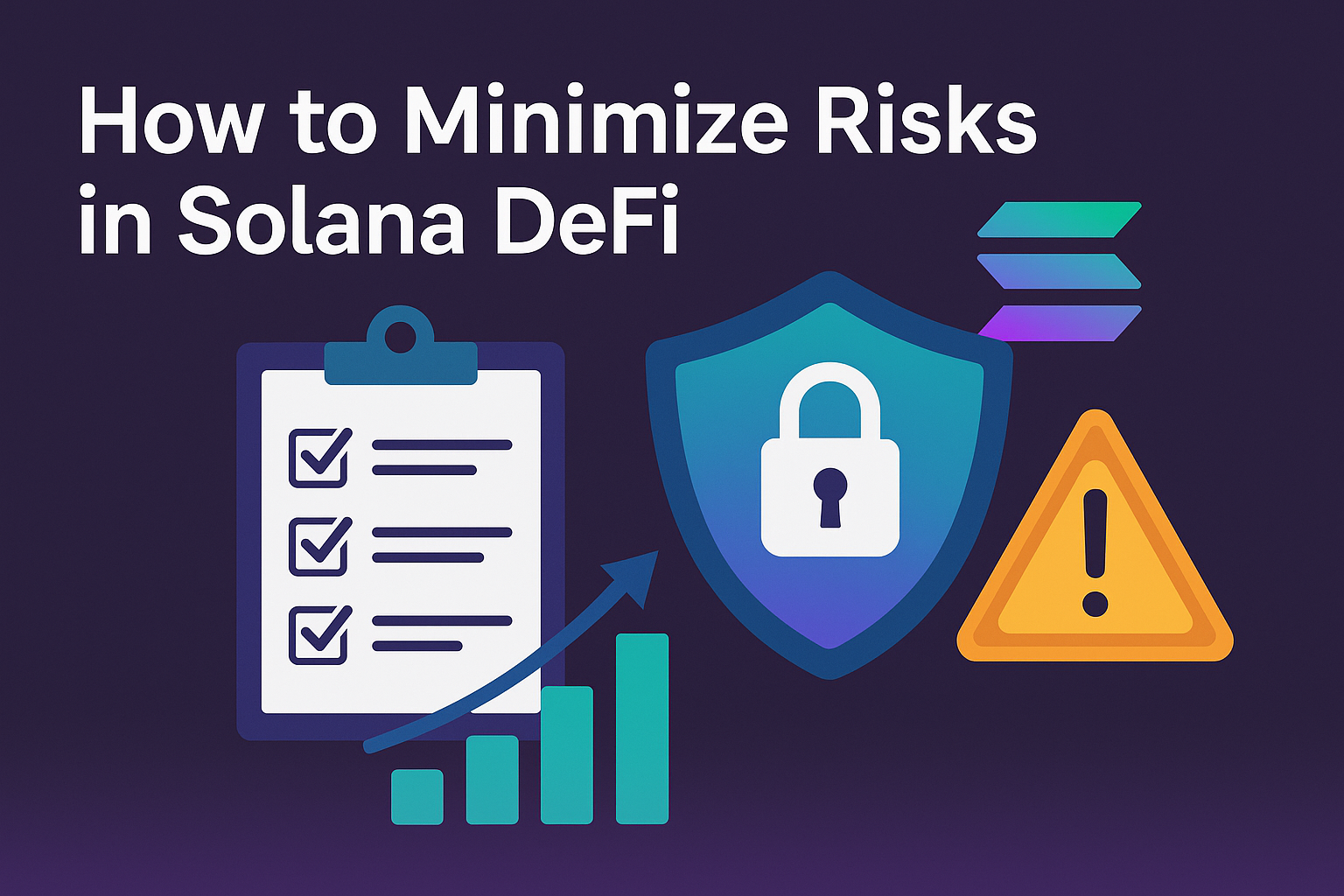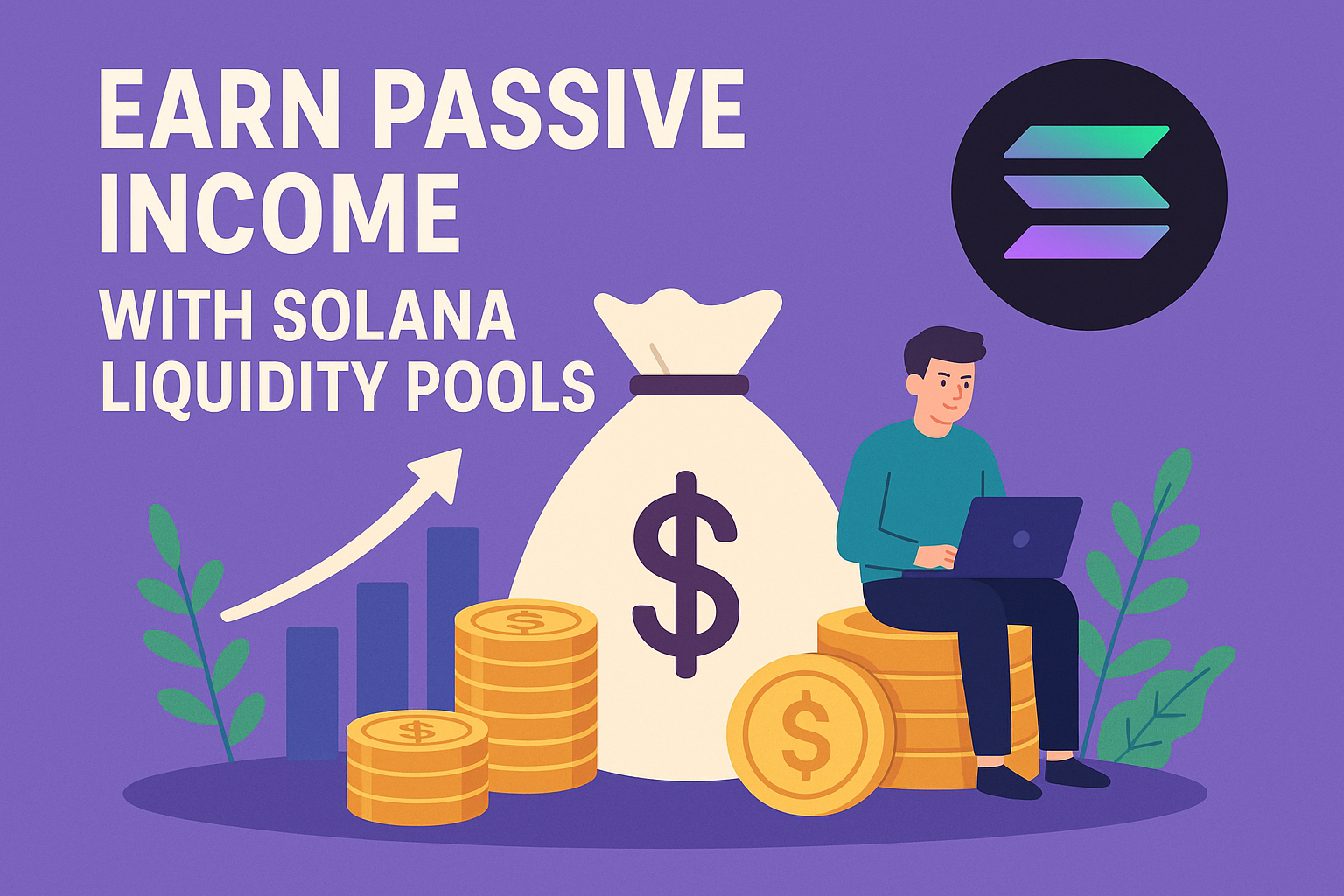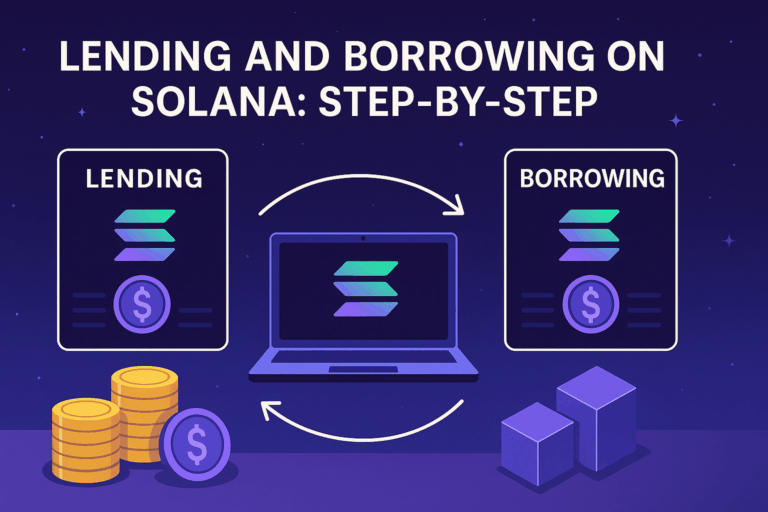Solana Staking Guide: How to Secure Your Investments
The Solana blockchain has rapidly become one of the most active ecosystems in the crypto industry, powering decentralized apps, DeFi protocols, and NFT marketplaces at lightning speed and low cost. But beyond trading and speculation, long-term holders of SOL have a powerful way to put their tokens to work: staking. Staking SOL not only strengthens the security of the network but also generates yield for token holders. Done correctly, it’s a low-risk way to grow your holdings while contributing to the health of the Solana ecosystem. This guide breaks down how staking works, why it matters, and how you can get started safely.
Table of Contents
What is Staking on Solana?
At its core, staking is the process of delegating your SOL tokens to validators on the Solana blockchain. Validators are responsible for processing transactions, securing the network, and maintaining consensus. In return for delegating your tokens, you receive a portion of the rewards they earn. Unlike traditional finance, there’s no need for middlemen—staking aligns incentives directly between token holders and network operators.
Proof-of-Stake in Action
Solana uses a Proof-of-Stake (PoS) mechanism, combined with its unique Proof of History (PoH), to achieve high throughput. Validators are chosen to produce blocks based on the amount of SOL staked with them, weighted by randomness and protocol rules. The more SOL staked with honest validators, the more secure and decentralized the network becomes. By staking your SOL, you’re essentially voting with your capital for trustworthy validators.
Why Stake SOL?
- Earn Rewards: Staking typically yields between 6–8% annually, though rates fluctuate with network conditions.
- Network Security: Your stake strengthens Solana’s resilience against attacks by supporting honest validators.
- Passive Growth: Unlike trading, staking allows you to grow your SOL holdings without active management.
Think of staking as depositing money into a savings account—but instead of a bank paying you interest, you’re rewarded for helping run a decentralized network.
How Staking Works Technically
Delegation and Validators
You don’t need to run a validator node to stake SOL. Instead, you delegate your tokens to a validator of your choice. Importantly, your SOL never leaves your wallet—it remains under your control. What changes is its “voting power,” which gets linked to the validator’s performance. Validators who operate efficiently and honestly maximize rewards for their delegators. Poorly performing or malicious validators, on the other hand, may reduce rewards and, in extreme cases, face penalties.
Epochs and Reward Distribution
Solana operates in epochs—time periods of about 2–3 days. At the end of each epoch, rewards are calculated and distributed. This means staking rewards compound regularly, providing steady growth. Unlike some blockchains, unstaking SOL (also called deactivating a stake account) requires a cool-down period of roughly one epoch before your funds become available again. Planning around this timing is essential for liquidity management.
Choosing a Validator
Selecting the right validator is one of the most important steps in staking. Here are key factors to consider:
- Commission Rate: Validators take a small percentage (typically 5–10%) of rewards as a fee. Lower isn’t always better—quality and reliability matter more.
- Performance: Check uptime and voting consistency. A validator that misses blocks reduces your rewards.
- Decentralization: Avoid delegating to the largest validators only. Spreading stake across smaller but reliable validators strengthens network decentralization.
- Reputation: Many validators are run by well-known teams, community groups, or infrastructure providers. Research their track records before delegating.
Example: If you stake with a validator charging 7% commission, and the network’s inflation rewards yield 7% annually, your net return may be around 6.5%, depending on uptime and efficiency.
Step-by-Step: How to Stake SOL
1. Choose a Wallet
Popular wallets for staking SOL include Phantom, Solflare, and Ledger (hardware wallet). Ensure your wallet supports staking functions and has security features you trust.
2. Create a Stake Account
In Solana, staking requires a dedicated stake account linked to your wallet. Most wallets create this automatically when you delegate for the first time.
3. Delegate Your SOL
Within the wallet interface, choose a validator, enter the amount of SOL to stake, and confirm the transaction. The delegation becomes active in the next epoch.
4. Monitor and Re-delegate
You can track rewards and validator performance directly in your wallet or via Solana explorers such as Solscan or Solana Beach. If your validator underperforms, you can deactivate and re-delegate to a better one after the cooldown period.
Risks and Considerations
Staking SOL is relatively low risk compared to yield farming or trading, but it’s not risk-free. Here are the main considerations:
- Liquidity Lock: Staked SOL cannot be instantly withdrawn; it takes an epoch to unstake.
- Validator Misbehavior: Although slashing (loss of staked funds due to validator misconduct) is currently minimal on Solana, there’s always operational risk.
- Inflation vs. Yield: SOL rewards come from inflation. While staking protects against dilution, real returns depend on token price performance.
Recent Trends in Solana Staking
With the Solana ecosystem expanding rapidly—thanks to DeFi apps, NFT platforms like Magic Eden, and new ventures in tokenized assets—staking has become a crucial foundation of the network. In 2025, Solana continues to rank among the highest in staked value, with over 60% of circulating SOL actively staked. The growing diversity of validators, along with institutional-grade staking providers, shows a healthy maturation of the ecosystem.
Conclusion: Secure Your SOL and Strengthen the Network
Staking SOL is more than just a way to earn yield—it’s a vote of confidence in the Solana blockchain and its future. By choosing reliable validators, understanding the mechanics of epochs and rewards, and keeping an eye on decentralization, you can secure your investments while contributing to the strength of the ecosystem. Whether you’re a long-term holder or just exploring decentralized apps on Solana, staking is a foundational step toward sustainable participation.
Ready to start staking? Explore trusted wallets like Phantom or Solflare today, choose a validator that aligns with your values, and put your SOL to work for both yourself and the broader Solana community.



I’ve been staking with Phantom for a while, but I didn’t know much about validator commissions until now.
Great point about decentralization—too many people just delegate to the biggest validators.
Super clear breakdown! I always thought staking was complicated, but this makes it look straightforward. Love the step-by-step format.
Been debating between Solflare and Ledger for staking—this helped me make up my mind. Solid guide for anyone new to Solana.